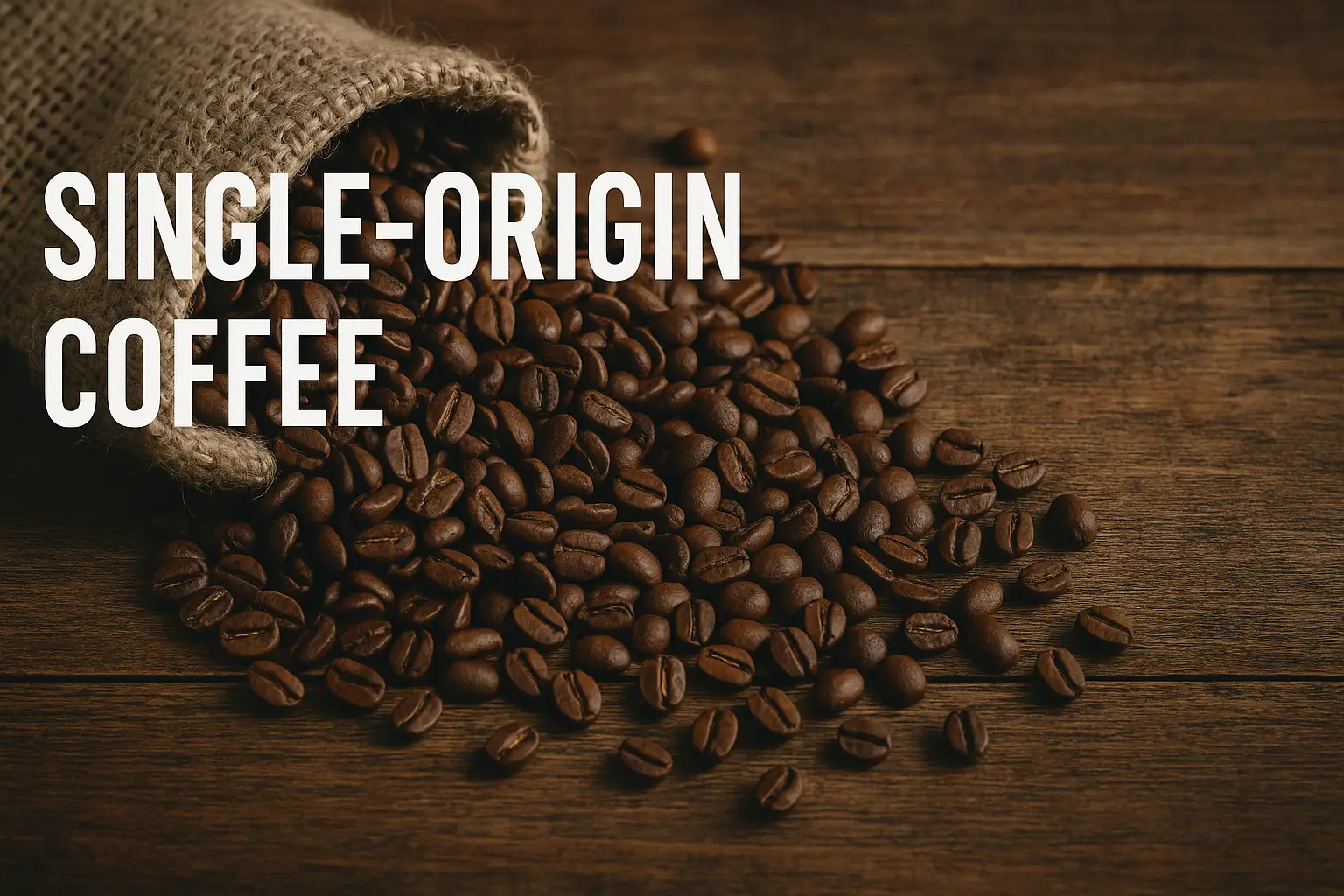Coffee lovers often hear the term “single-origin” tossed around in cafés, packaging, and coffee tastings. But what exactly does it mean, and why does it matter? In this article, we’ll dive deep into the world of single-origin coffee, exploring its definition, benefits, drawbacks, and why it might just become your new favorite way to enjoy your brew.
Understanding the Term “Single-Origin”
Single-origin coffee refers to coffee that comes from a specific geographic location. This could be as broad as a country (e.g., Ethiopia, Colombia), more specific like a region within a country (e.g., Sidamo in Ethiopia), or even as precise as a single farm or estate.
Types of Single-Origin Classifications
- Single Country: Coffee sourced from just one country.
- Single Region: Coffee from a specific area within a country.
- Single Farm/Estate: Coffee that can be traced back to one farm or cooperative.
The more specific the origin, the more traceable and unique the coffee tends to be.
Why Single-Origin Coffee Stands Out
1. Unique Flavor Profiles
Each region’s soil, altitude, climate, and cultivation methods give rise to distinct flavor notes. For example:
- Ethiopian coffees often showcase floral and fruity notes.
- Colombian coffees are known for their balanced flavor and mild acidity.
- Guatemalan coffees typically feature chocolatey and spicy undertones.
Single-origin coffee allows these characteristics to shine without being blended with other beans.
2. Traceability and Transparency
Consumers increasingly want to know where their food—and coffee—comes from. Single-origin coffees offer a transparent path from farm to cup, often including details about the farmers, their practices, and even harvest dates.
3. Seasonal and Limited Editions
Because single-origin coffees are tied to specific harvests, they’re often seasonal and only available for a limited time. This exclusivity adds to the appeal for coffee connoisseurs.
4. Ethical and Sustainable Sourcing
Many single-origin coffees are part of ethical sourcing programs like Fair Trade, Direct Trade, or Rainforest Alliance, ensuring that farmers are paid fairly and encouraged to use sustainable farming methods.
How Single-Origin Differs from Coffee Blends
While single-origin highlights unique characteristics, blends combine beans from multiple origins to create a consistent and often balanced flavor. Blends are great for espresso or mass-market consumption but may lack the nuance and traceability of single-origin.
Pros of Blends:
- Consistent taste
- Balanced and smooth
- Often more affordable
Pros of Single-Origin:
- Unique flavors
- Transparency and traceability
- Ethical sourcing potential
How to Brew Single-Origin Coffee for the Best Experience
To fully appreciate single-origin beans, it’s important to choose a brewing method that brings out their specific characteristics.
Recommended Brewing Methods:
- Pour-Over: Ideal for highlighting clarity and subtle notes.
- French Press: Good for bolder, full-bodied origins.
- AeroPress: Excellent for controlling variables and achieving a clean cup.
- Cold Brew: Smooth and less acidic, great for fruity single-origins.
Always grind your beans fresh and use filtered water for optimal results.
What to Look for When Buying Single-Origin Coffee
1. Roast Date
Freshness is crucial. Always check the roast date and aim to use the coffee within 2-4 weeks for peak flavor.
2. Processing Method
- Washed: Cleaner, brighter flavors.
- Natural: Fruity, sometimes wine-like notes.
- Honey: A balance of clean and sweet flavors.
3. Roast Level
- Light Roast: Best for highlighting origin-specific nuances.
- Medium Roast: Balanced, good for most single-origins.
- Dark Roast: May overshadow delicate origin flavors.
4. Certification and Ethics
Look for certifications or partnerships that ensure ethical sourcing and environmental care.
The Challenges of Single-Origin Coffee
While single-origin coffee has many benefits, it also comes with a few challenges:
- Price: Typically more expensive due to traceability and quality.
- Availability: May be limited or seasonal.
- Inconsistency: Each harvest may taste different based on environmental factors.
Why It Matters for Coffee Culture
Single-origin coffee promotes transparency, supports small-scale farmers, and encourages consumers to appreciate the rich diversity of coffee flavors. It’s a step toward more ethical, thoughtful, and enjoyable coffee consumption.
In a world where convenience often trumps quality, single-origin coffee invites us to slow down and savor every sip. Whether you’re a seasoned barista or a curious beginner, exploring single-origin coffee can deepen your appreciation for this beloved beverage.
Wrapping It Up
Single-origin coffee is more than a trend—it’s a movement that emphasizes quality, ethics, and flavor. By choosing single-origin, you not only get to enjoy unique taste experiences but also contribute to a more sustainable and transparent coffee industry.
So next time you’re shopping for beans or ordering at your favorite café, look for the origin. Your taste buds—and the farmers—will thank you.
